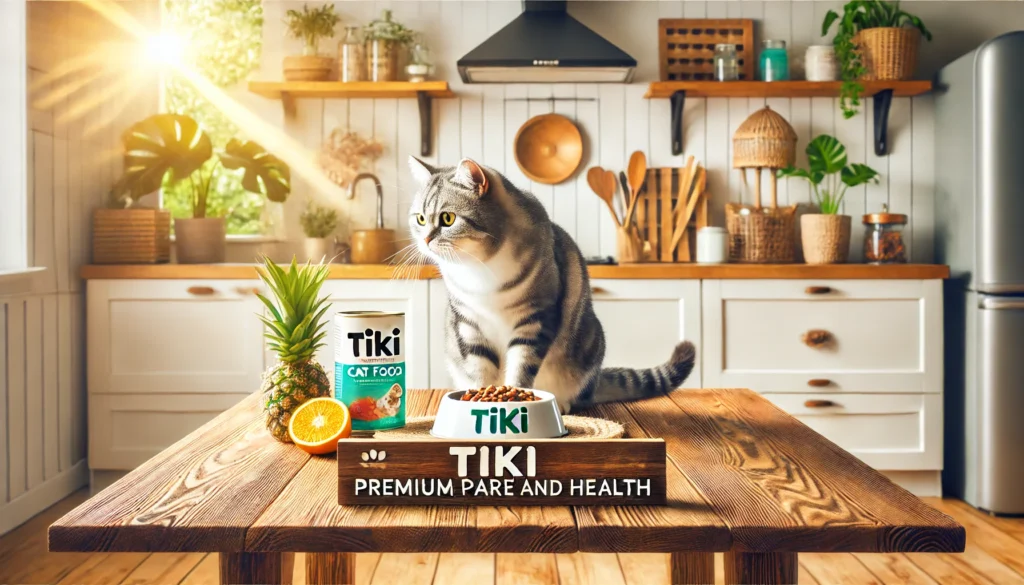Feeding your cat can be more complicated than just filling up their bowl. With high-quality cat food options like Tiki Cat, it’s essential to ensure your feline friend is getting the right amount of nutrition. Overfeeding or underfeeding can lead to health issues, and every cat’s needs are different based on age, activity level, and overall health. This guide will walk you through everything you need to know about feeding your cat Tiki Cat, ensuring they stay healthy and happy.
Why Portion Control Matters for Cats
Proper portion control is crucial for your cat’s well-being. While it’s tempting to leave food out all day, free-feeding can lead to overeating, weight gain, and even long-term health problems like obesity and diabetes. On the other hand, feeding too little can cause your cat to miss out on essential nutrients, leading to lethargy, poor coat quality, and other issues.
Feeding the correct portions ensures that your cat receives the perfect balance of calories, protein, and nutrients. This not only keeps them in good physical condition but also supports their mental health and energy levels.
Understanding Tiki Cat Food

Tiki Cat is a premium brand of cat food known for its high-protein, grain-free recipes. The brand offers both wet and dry food, catering to a wide range of feline preferences. With real meat and fish as primary ingredients, Tiki Cat is an excellent choice for pet owners who want to provide high-quality meals for their cats.
But how much of this premium food should you feed your cat? Let’s break it down.
Factors Influencing How Much Tiki Cat to Feed
Every cat is unique, and their feeding needs can vary significantly. Here are the key factors to consider when determining portion sizes:
- Age
- Kittens: Kittens require more calories and nutrients to fuel their rapid growth. They should be fed multiple small meals throughout the day with higher calorie content. Wet food is often preferred because it’s easier for kittens to chew and digest.
- Adult Cats: Adult cats require consistent portions to maintain their weight and energy levels. Most adult cats do well with two meals per day.
- Senior Cats: As cats age, their metabolism slows down. Senior cats may need fewer calories, but they still require nutrient-dense food to maintain muscle mass and overall health.
- Weight and Activity Level
- Active Cats: Cats that love to run, jump, and play burn more calories and require more significant portions to meet their energy needs.
- Sedentary Cats: If your cat spends most of their time lounging, they’ll need smaller portions to prevent weight gain.
- Health Conditions
Certain health conditions, like obesity or diabetes, require customized feeding plans. For example, an overweight cat might need smaller, controlled portions, while a diabetic cat might require meals with a consistent schedule to manage blood sugar levels. Always consult a veterinarian for personalized advice.
General Feeding Guidelines for Tiki Cat
While every cat is different, here are some general guidelines for feeding Tiki Cat based on the brand’s recommendations:
For Wet Food
- Feed approximately 1 ounce of wet food per pound of body weight per day, divided into two or more meals.
- Example: A 10-pound cat would need about 10 ounces of wet food daily.
For Dry Food
- The portion size for dry food depends on the calorie content listed on the packaging. On average, feed ¼ to ½ cup of dry food per day, depending on your cat’s size and activity level.
- Always provide fresh water alongside dry food, as it lacks the moisture content found in wet food.
How to Transition Your Cat to Tiki Cat Food

If you’re introducing Tiki Cat to your cat’s diet, do it gradually to avoid digestive upset. Here’s a simple transition plan:
- Days 1-3: Mix 25% Tiki Cat food with 75% of your cat’s current food.
- Days 4-6: Increase to a 50/50 mix.
- Days 7-9: Mix 75% of Tiki Cat food with 25% of the current food.
- Day 10: Switch entirely to Tiki Cat.
Monitor your cat’s behaviour and stool quality during the transition. If you notice any signs of discomfort or digestive issues, slow down the process.
Tips for Feeding Tiki Cat
To ensure your cat gets the most out of their meals, follow these practical tips:
- Measure Portions Accurately: Use a measuring cup or kitchen scale to avoid overfeeding or underfeeding.
- Split Meals: Divide the daily portion into two or three smaller meals to mimic a cat’s natural eating habits.
- Monitor Your Cat’s Weight: Regularly check your cat’s weight and adjust portion sizes if needed.
- Provide Fresh Water: Always ensure your cat has access to clean, fresh water, especially if they’re eating dry food.
- Observe Eating Habits: Pay attention to how your cat reacts to the food. If they seem overly hungry or leave food behind, you may need to adjust the portions.
When to Consult a Veterinarian
If you’re unsure about how much Tiki Cat to feed your cat or if your cat has specific health concerns, consult your veterinarian. They can provide personalized recommendations based on your cat’s weight, age, activity level, and overall health.
Conclusion
Feeding your cat the right amount of Tiki Cat food is essential for their health, happiness, and longevity. By considering factors like age, activity level, and weight and following general feeding guidelines, you can ensure your feline friend gets the nutrition they need. Remember to monitor their weight and behavior, and don’t hesitate to seek advice from your veterinarian if needed. With proper care, your cat can thrive on Tiki Cat’s high-quality meals.

Hi, I’m Sondip,
I’m a writer who loves to help people solve their problems. I write about small animals like mice and other small animals and even pests.

